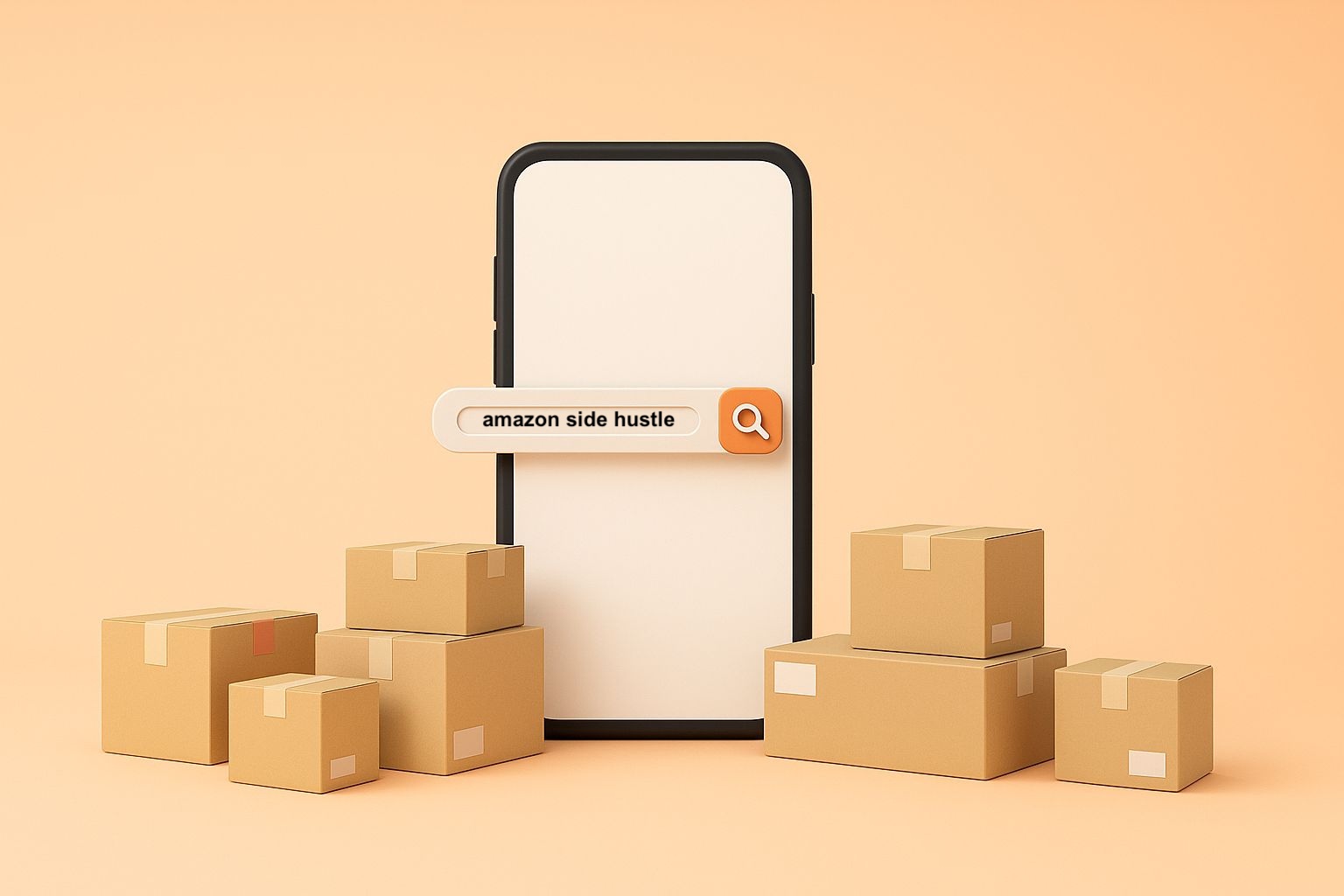Amazon Flywheel – A Business Blueprint for Success

Many factors have led to Amazon becoming the world’s number one e-commerce platform. A key factor driving this success is the Amazon Flywheel model. This growth strategy, also known as Amazon’s Virtuous Cycle, has customer satisfaction and sustainable business practices at its core foundation. In this article, we will explore the Amazon Flywheel concept, how it drives Amazon’s success, and how you can apply these principles to your own business.
What is the Amazon Flywheel?
Definition and Origin
A flywheel is a mechanical component that stores kinetic energy. Once in motion, it provides a stable and consistent force, making it a fitting metaphor for Amazon’s growth strategy. Coined (and famously visualized on a napkin) by Jeff Bezos in 2001, the term “Amazon Flywheel” elegantly describes the cyclical and self-reinforcing nature of Amazon’s business model. As shown in the image below, Amazon’s concept consists of multiple relevant drivers which revolve around the main element that the online giant lays its focus on: growth.

Amazon Flywheel Components
The Key Elements
1. Customer Experience
At the core of the Amazon Flywheel is a relentless focus on customer satisfaction. By providing exceptional service, fast delivery, and competitive prices, Amazon ensures that customers remain loyal.
2. Traffic
A superior customer experience naturally leads to increased web traffic. More visitors result in higher sales volume and better visibility.
3. Third-Party Sellers
Increased traffic attracts more third-party sellers, who are eager to tap into Amazon’s expansive customer base.
4. Selection
More sellers mean a broader selection of products, enhancing the platform’s appeal to customers.
5. Lower Cost Structure
Economies of scale allow Amazon to reduce operational costs and offer lower prices, thus feeding back into customer satisfaction and perpetuating the flywheel effect.
The Flywheel in Action
How the Flywheel Works
The Amazon Flywheel business model starts with low prices, which attract customers and increase traffic. This influx of traffic attracts more third-party sellers, who expand the product selection, enhancing the customer experience. As customers find a broader range of products at competitive prices, they shop more, fueling further growth. This cycle, powered by the Amazon Flywheel effect, creates a self-sustaining loop that propels the company forward.
Real-World Impact of the Flywheel
Case Studies and Examples
Amazon’s implementation of the Flywheel Strategy has resulted in unparalleled growth and market dominance. Initiatives such as Amazon Prime and Fulfilled by Amazon (FBA) are direct products of this strategy. Prime, for example, offers free two-day shipping, exclusive deals, and streaming services, enhancing customer loyalty and increasing sales volume. The Fulfilled by Amazon program allows sellers to leverage Amazon’s vast logistics network, ensuring fast and reliable delivery to customers.

Applying the Flywheel Strategy to Your Business
Practical Tips and Strategies
Here’s the good part about the Amazon Flywheel: It’s applicable to businesses of any size. After all, Amazon wasn’t always the online giant it is today. Some may even say it became so successful due to business concepts like the Amazon Flywheel strategy.
1. Customer Experience
Monitoring customer performance metrics is crucial. Pay attention to satisfaction scores, average resolution times, and customer feedback. Implement initiatives to enhance the buying journey, such as user-friendly website navigation, fast shipping, and responsive customer support. Smaller businesses should focus on two things: delivering exceptional service and products to build customer loyalty and focusing on creating a seamless shopping experience to encourage repeat purchases.
2. Dynamic Innovation
Adopt a culture of continuous innovation. Keep your promotional strategies fresh by experimenting with new advertising campaigns and product offerings. Look at Amazon Prime Flywheel for inspiration – continuously adding value keeps customers engaged.
3. SEO Optimization
Ensure your product listings are fully optimized for search engines. Incorporate target keywords into your product titles, descriptions, and feature lists to improve visibility. Optimized listings help increase organic search traffic, driving more sales and feeding the Amazon Flywheel effect. For instance, integrating relevant keywords like “Amazon Flywheel model” and “Amazon AI Flywheel” can enhance your content’s searchability.
4. Product Analysis
Regularly assess your product offerings to understand which items are performing well and which are underperforming. Don’t hesitate to use Amazon software like SELLERLOGIC Business Analytics to streamline these processes and make the monitoring as comfortable for you as possible. Manage your inventory proactively and seek opportunities to expand your catalog. If a product isn’t meeting targets, don’t hesitate to discontinue it and focus on more profitable items.
5. Reputation Management
Building and maintaining a robust online reputation is crucial. Positive reviews and a strong online presence foster trust with potential customers. Utilize platforms like your website and social media to showcase customer testimonials and engage with your audience. Monitoring your reputation ensures long-term customer loyalty and consistent sales, contributing to the Amazon Flywheel strategy.
6. Automation of Tedious Tasks
If you take another look at the Amazon Flywheel diagram, you will see that one element on the Amazon Flywheel Diagram is ‘Sellers.’

While Amazon sellers are a crucial component of the delivery giant’s ecosystem, they unfortunately do not receive the same attention that customers do. This means that many processes within Amazon remain quite tedious for sellers, forcing them to find ways to circumvent these challenges. Automating processes such as your pricing strategy, your reimbursement method for recovering funds owed to you due to FBA errors, or the monitoring of your company’s revenue and profitability are surefire ways to save time and resources.
Challenges and Considerations
Initial Effort
When starting out, Amazon was also making losses in the beginning due to their extensive customer-centricity.
Implementing the Amazon Flywheel model requires a lot of initial effort. Be prepared for a period of optimization before seeing significant results. It’s essential to continuously improve your strategies based on performance metrics and customer feedback.
Continuous Improvement
The Amazon Flywheel effect necessitates ongoing refinement of your business practices. Regularly evaluate your customer service, product listings, and marketing strategies to ensure they align with the flywheel model’s principles.
Final Thoughts
The Amazon Flywheel Strategy is a powerful framework for achieving long-term growth and success. By focusing on customer experience and leveraging the self-sustaining momentum of the flywheel, businesses of all sizes can drive sustainable growth and outperform competitors. Implementing the Amazon Flywheel concept requires dedication and continuous effort, but the rewards are well worth it.
Image credits in order of appearance: © Jeff Bezos, © Wattana – stock.adobe.com, © peopleimages.com – stock.adobe.com






